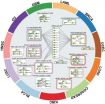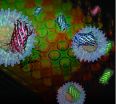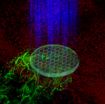(Press-News.org) Leading conservation scientists from around the world have called for a substantial role for nuclear power in future energy-generating scenarios in order to mitigate climate change and protect biodiversity.
In an open letter to environmentalists with more than 60 signatories, the scientists ask the environmental community to "weigh up the pros and cons of different energy sources using objective evidence and pragmatic trade-offs, rather than simply relying on idealistic perceptions of what is 'green' ".
Organized by ecologists Professor Barry Brook and Professor Corey Bradshaw from the University of Adelaide's Environment Institute, the letter supports their recent article 'Key role for nuclear energy in global biodiversity conservation', published in the journal Conservation Biology.
"Full decarbonization of the global electricity-generation sector is required soon to avoid the worst ravages of climate change," says Professor Bradshaw, Director, Ecological Modelling at the Environment Institute and recently appointed Sir Hubert Wilkins Chair of Climate Change.
"Biodiversity is not only threatened by climate disruption arising largely from fossil-fuel derived emissions, it is also threatened by land transformation resulting from renewable energy sources, such as flooded areas for hydro-electricity, agricultural areas needed for biofuels and large spaces needed for wind and solar farms."
In the article, the researchers evaluated land use, emissions, climate and cost implications of three different energy scenarios: 'business as usual' fossil-fuel dominated; a high renewable-energy mix excluding nuclear; and an energy mix with a large nuclear contribution plus some renewable and fossil-fuel sources.
They also used "multi-criteria decision-making analysis" to rank seven major energy types based on costs and benefits, testing the sensitivity of their rankings to bias stemming from philosophical ideals.
"When compared objectively with renewables, nuclear power performs as well or better in terms of safety, cost, scaleability, land transformation and emissions," says Professor Barry Brook, Chair of Climate Change at the Environment Institute for this study, and now Professor of Environmental Sustainability at the University of Tasmania.
"Not only does next-generation nuclear power provide emissions-free electricity, it is a highly concentrated energy source that consumes legacy waste and minimises impacts to biodiversity compared to all other energy sources."
They argue that there is strong evidence for supporting advanced nuclear power systems with complete fuel recycling as part of a portfolio of sustainable energy technologies that also includes appropriate use of renewables, energy storage and energy efficiency.
"Idealized mixes of nuclear and renewables are regionally dependent, and should be compared objectively without prejudice or preconceived notions of what is 'green'," says Professor Bradshaw.
INFORMATION:
The letter is published on ConservationBytes.com and BraveNewClimate.com.
Media Contacts
Professor Corey Bradshaw
Director, Ecological Modelling
Environment Institute
The University of Adelaide
Phone: +61 8 8313 5842
Cell phone: +61 400 697 665
corey.bradshaw@adelaide.edu.au
Professor Barry Brook
Director of Climate Science
Environment Institute
The University of Adelaide
(now at University of Tasmania)
Cell phone: +61 420 958 400
barry.brook@utas.edu.au
SALT LAKE CITY, Dec. 15, 2014 - The rate at which carbon emissions warmed Earth's climate almost 56 million years ago resembles modern, human-caused global warming much more than previously believed, but involved two pulses of carbon to the atmosphere, University of Utah researchers and their colleagues found.
The findings mean the so-called Paleocene-Eocene thermal maximum, or PETM, can provide clues to the future of modern climate change. The good news: Earth and most species survived. The bad news: It took millennia to recover from the episode, when temperatures rose ...
PROVIDENCE, R.I. [Brown University] -- Using a computer algorithm that can sift through mounds of genetic data, researchers from Brown University have identified several networks of genes that, when hit by a mutation, could play a role in the development of multiple types of cancer.
The algorithm, called Hotnet2, was used to analyze genetic data from 12 different types of cancer assembled as part of the pan-cancer project of The Cancer Genome Atlas (TCGA). The research looked at somatic mutations -- those that occur in cells during one's lifetime -- and not genetic variants ...
Cold Spring Harbor, NY - The next time you are in a crowded room, or a meeting, or even at the park with your kids, take a look around. How many people are on their phone? Distractions invade every aspect of our lives. Status updates, text messages, email notifications all threaten to steal our attention away from the moment. While we fight the urge to check the phone, our brains are making constant judgment calls about where to focus attention. The brain must continually filter important information from irrelevant interference.
Scientists have hypothesized for decades ...
AMHERST, Mass. - Traditional genomic, proteomic and other screening methods currently used to characterize drug mechanisms are time-consuming and require special equipment, but now researchers led by chemist Vincent Rotello at the University of Massachusetts Amherst offer a multi-channel sensor method using gold nanoparticles that can accurately profile various anti-cancer drugs and their mechanisms in minutes.
As Rotello and his doctoral graduate student Le Ngoc, one of the lead authors, explain, to discover a new drug for any disease, researchers must screen billions ...
Researchers have released one of the most comprehensive assessments of the timing and amount of greenhouse gas emissions that each of the world's major economies could produce under different scenarios, i.e. without new climate policies, for the currently discussed pledges, and under a scenario that limits future temperature rise to 2°C. "The pledges made so far lead to earlier emission peaking in many countries, with 1-1.5 °C less total warming than without these policies, but not sufficient to meet the 2oC target. Under the proposed commitments, cumulative CO2 ...
Advocates of biotech crops and those who favor traditional farming practices such as crop diversity often seem worlds apart, but a new study shows that these two approaches can be compatible. An international team led by Chinese scientists and Bruce Tabashnik at the University of Arizona's College of Agriculture and Life Sciences discovered that the diverse patchwork of crops in northern China slowed adaptation to genetically engineered cotton by a wide-ranging insect pest. The results are published in the advance online edition of Nature Biotechnology.
Genetically engineered ...
Predictions of Greenland ice loss and its impact on rising sea levels may have been greatly underestimated, according to scientists at the University of Leeds.
The finding follows a new study, which is published today in Nature Climate Change, in which the future distribution of lakes that form on the ice sheet surface from melted snow and ice - called supraglacial lakes - have been simulated for the first time.
Previously, the impact of supraglacial lakes on Greenland ice loss had been assumed to be small, but the new research has shown that they will migrate farther ...
Sparks literally fly when a sperm and an egg hit it off. The fertilized mammalian egg releases from its surface billions of zinc atoms in "zinc sparks," one wave after another, a Northwestern University-led interdisciplinary research team has found.
Using cutting-edge technology they developed, the researchers are the first to capture images of these molecular fireworks and pinpoint the origin of the zinc sparks: tiny zinc-rich packages just below the egg's surface.
Zinc fluctuations play a central role in regulating the biochemical processes that ensure a healthy ...
When someone you know is wearing an unfamiliar hat, you might not recognize them. Georgia Institute of Technology researchers are using just such a disguise to sneak biomaterials containing peptide signaling molecules into living animals.
When the disguised peptides are needed to launch biological processes, the researchers shine ultraviolet light onto the molecules through the skin, causing the "hat" structures to come off. That allows cells and other molecules to recognize and interact with the peptides on the surface of the material.
This light-activated triggering ...
BOSTON - December 15, 2014 - In a study published today by Nature, researchers at Joslin Diabetes Center used a microscopic worm (C. elegans) to identify a new path that could lead to drugs to slow aging and the chronic diseases that often accompany it--and might even lead to better cosmetics.
The Joslin team looked at how treatments known to boost longevity in the one-millimeter long C. elegans (including calorie restriction and treatment with the drug rapamycin) affected the expression of genes that produce collagen and other proteins that make up the extra-cellular ...







